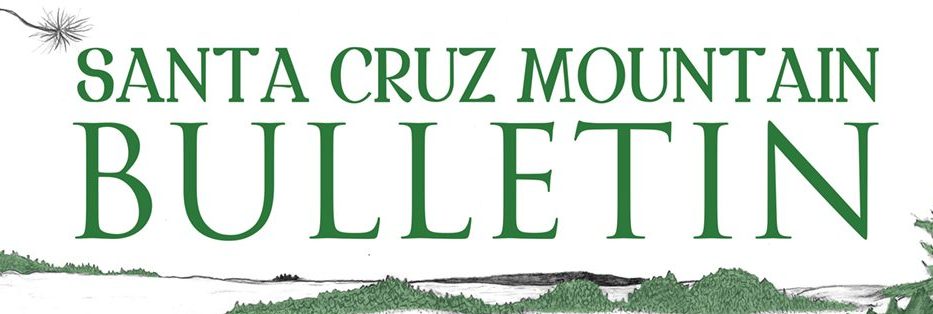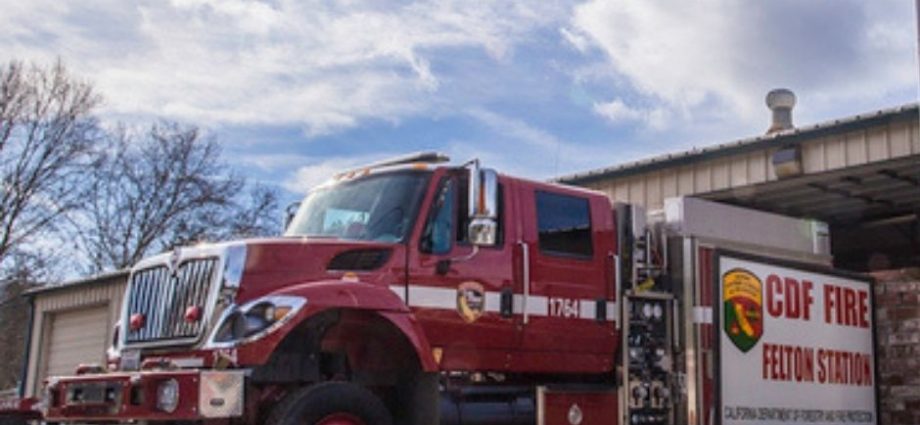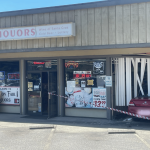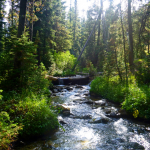Taking the Bull by the Horns
By Kevin Foster
Taking the Bull by the Horns
By Kevin Foster
After the CZU fire, the community is looking to find ways to protect their homes from fire. Several home hardening presentations throughout the community have been very beneficial but also out of reach financially for some of the community.
Here are some examples:
1) Residing your home with hardy board fire-resistant siding
2) Having your roof eaves framed in with fire-resistant materials and newly designed vents that melt closed when exposed to fire.
3) Removing wood shake shingle roofs and replacing.
These are all fantastic fire prevention methods but out of reach financially for a lot of us. So I’ve been checking with community members that are doing their best within their budget and I have seen some fantastic affordable options.
Several properties are clearing brush and forest duff, laying filter cloth and covering it with drain rock or base rock which is around $40 for 2 tons from the Felton quarry.
Some people with wood shake shingles have run 1/2 galvanized pipe along with their roof ridgeline and down near garden hose spogot, installed roof sprinklers, and painted the pipe to match the color. If a fire is nearby they can hook the hose to the half-inch pipe and wet down their roof. Additionally, it wets down about 6 feet of the perimeter of their house.
I’m seeing Landscapers are now booked regularly to help keep properties cleared of fuel such as leaf litter and redwood duff. It’s really wonderful to see the community doing the best they can within their means. If you’ve come up with some new innovative low-budget fire-resistant ideas please send an email to the Santa Cruz Mountain Bulletin – we’d love to share your ideas in future articles this summer.
Do your best to follow these Cal fires recommendations if possible:
Roof
The roof is the most vulnerable part of your home. Homes with wood or shingle roofs are at high risk of being destroyed during a wildfire.
- Build your roof or re-roof with materials such as composition, metal, clay, or tile. Block any spaces between the roof decking and covering to prevent embers from catching.
- Remove accumulated vegetative debris from the roof.
Vents
Vents on homes create openings for flying embers.
- Cover all vent openings with 1/16-inch to 1/8-inch metal mesh. Do not use fiberglass or plastic mesh because they can melt and burn.
- Use ember and flame resistant vents (WUI vents).
Eaves and Soffits
Eaves should be boxed in and protected with ignition-resistant* or non-combustible materials.
Windows
The heat from a wildfire can cause windows to break even before the home is on fire. This allows burning embers to enter and start fires inside. Single-paned and large windows are particularly vulnerable.
- Install dual-paned windows with one pane of tempered glass to reduce the chance of breakage in a fire.
- Consider limiting the size and number of windows that face large areas of vegetation.
- Install screens in all usable windows to increase ember resistance and decrease radiant heat exposure
Walls
Wood products, such as boards, panels or shingles, are common siding materials. However, they are flammable and not good choices for fire-prone areas.
- Build or remodel your walls with ignition resistant* building materials, such as stucco, fiber cement wall siding, fire retardant, treated wood, or other approved materials. This is especially important when neighboring homes are within 30-feet of the home.
- Be sure to extend materials from the foundation to the roof.
- Smaller spaces, such as the roof-to-wall area, should have their siding replaced with non-combustible material.
Decks
Surfaces within 10 feet of the building should be built with ignition-resistant*, non-combustible, or other approved materials.
- Create an ember-resistant zone around and under all decks and make sure that all combustible items are removed from underneath your deck.
- If a deck overhangs a slope, create and maintain a defensible space downslope from the deck to reduce the chances of flames reaching the underside of the deck.
Rain Gutters
Keep rain gutters clear or enclose rain gutters to prevent the accumulation of plant debris.
- Install a corrosion-resistant and non-combustible metal drip edge for additional protection of the combustible components on your roof’s edge.
- Use a noncombustible gutter cover to prevent the buildup of debris and vegetation in the gutter
Patio Cover
Use the same ignition-resistant* materials for patio coverings as a roof.
Chimney
Cover your chimney and stovepipe outlets with a non-flammable screen. Use metal screen material with openings no smaller than 3/8-inch and no larger than 1/2-inch to prevent embers from escaping and igniting a fire.
- Close the fireplace flue during fire season when the chimney is not being used.
Garage
Have a fire extinguisher and tools such as a shovel, rake, bucket, and hose available for fire emergencies.
- Add a battery backup to the garage door motor so that the garage can easily be operated if power is out.
- Install weather stripping around and under the garage door to prevent embers from blowing in.
- Store all combustible and flammable liquids away from ignition sources.
- Treat windows and vents in the garage the same way as if it was a part of the house.
Fences
The best practice is to separate your fence from your house or upgrade the last 5-feet of the fence to a non-combustible material to reduce the chance of the fence from bringing fire to your home.
Driveways and Access Roads
Driveways should be built and maintained in accordance with state and local codes to allow fire and emergency vehicles to reach your home. Consider maintaining access roads with a minimum of 10 feet of clearance on either side, allowing for two-way traffic.
- Ensure that all gates open inward and are wide enough to accommodate emergency equipment.
- Trim trees and shrubs overhanging the road to allow emergency vehicles to pass.
Address
Make sure your address is clearly visible from the road.
Water Supply
Consider having multiple garden hoses that are long enough to reach all areas of your home and other structures on your property. If you have a pool or well, consider getting a pump.




















